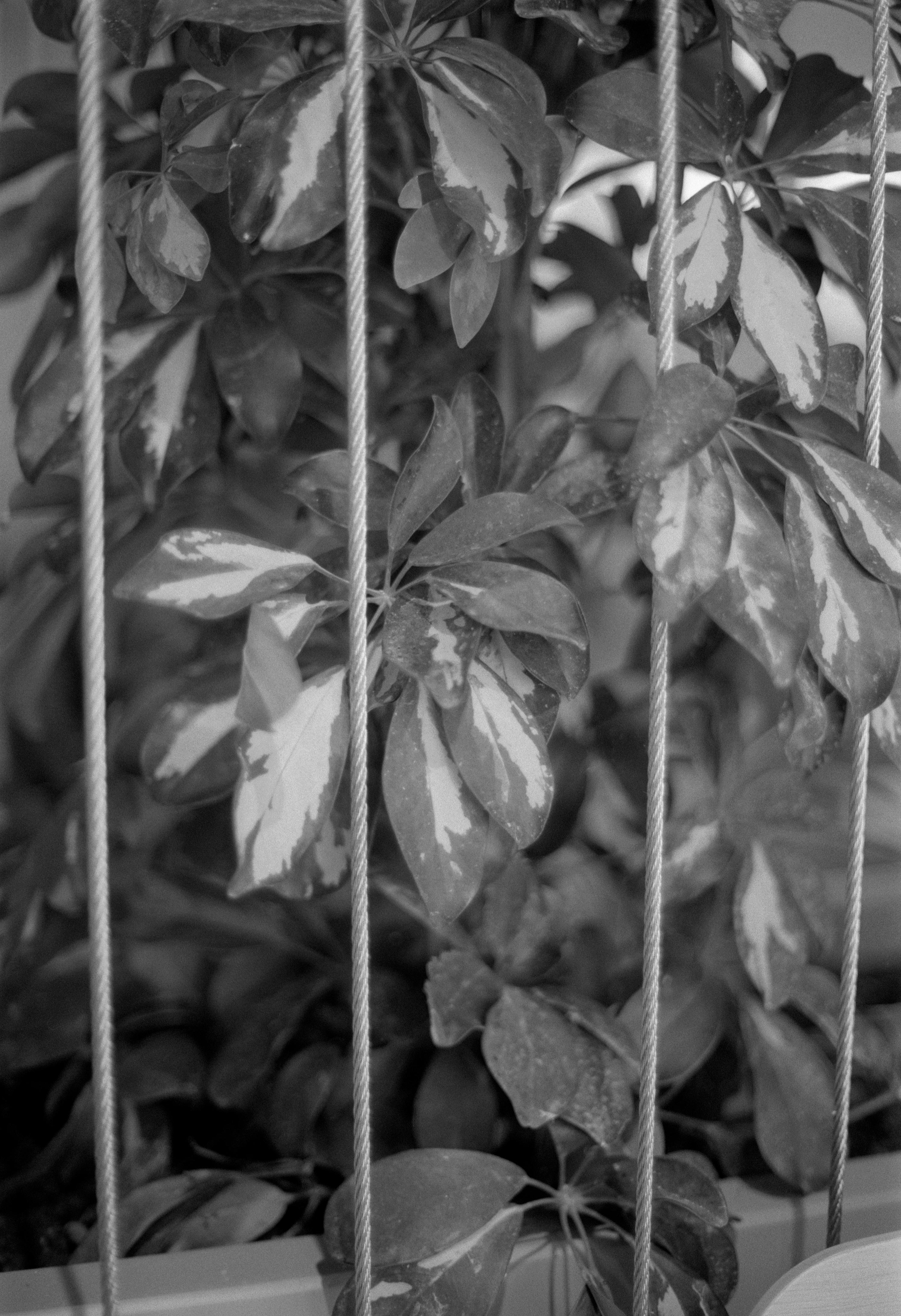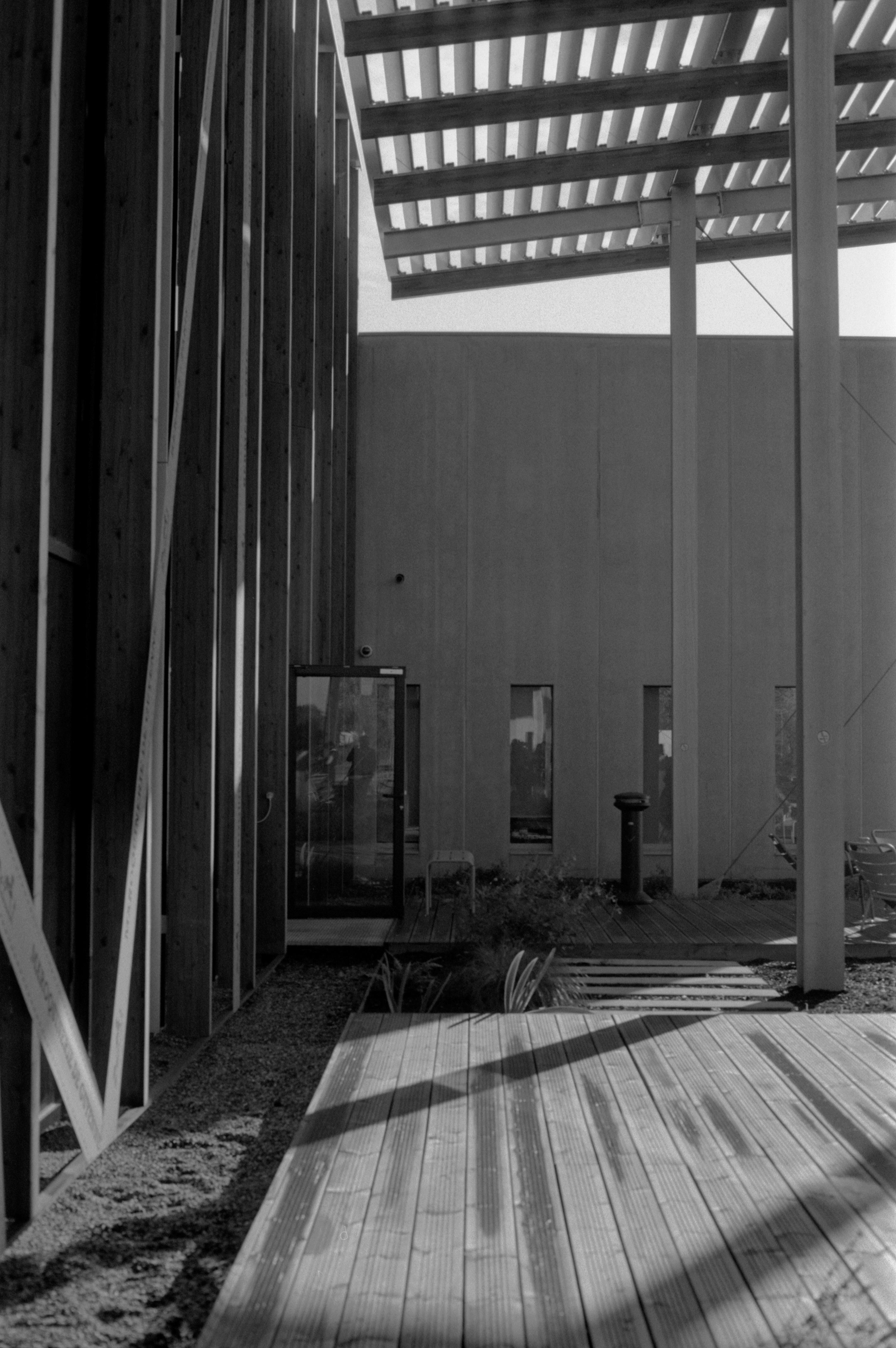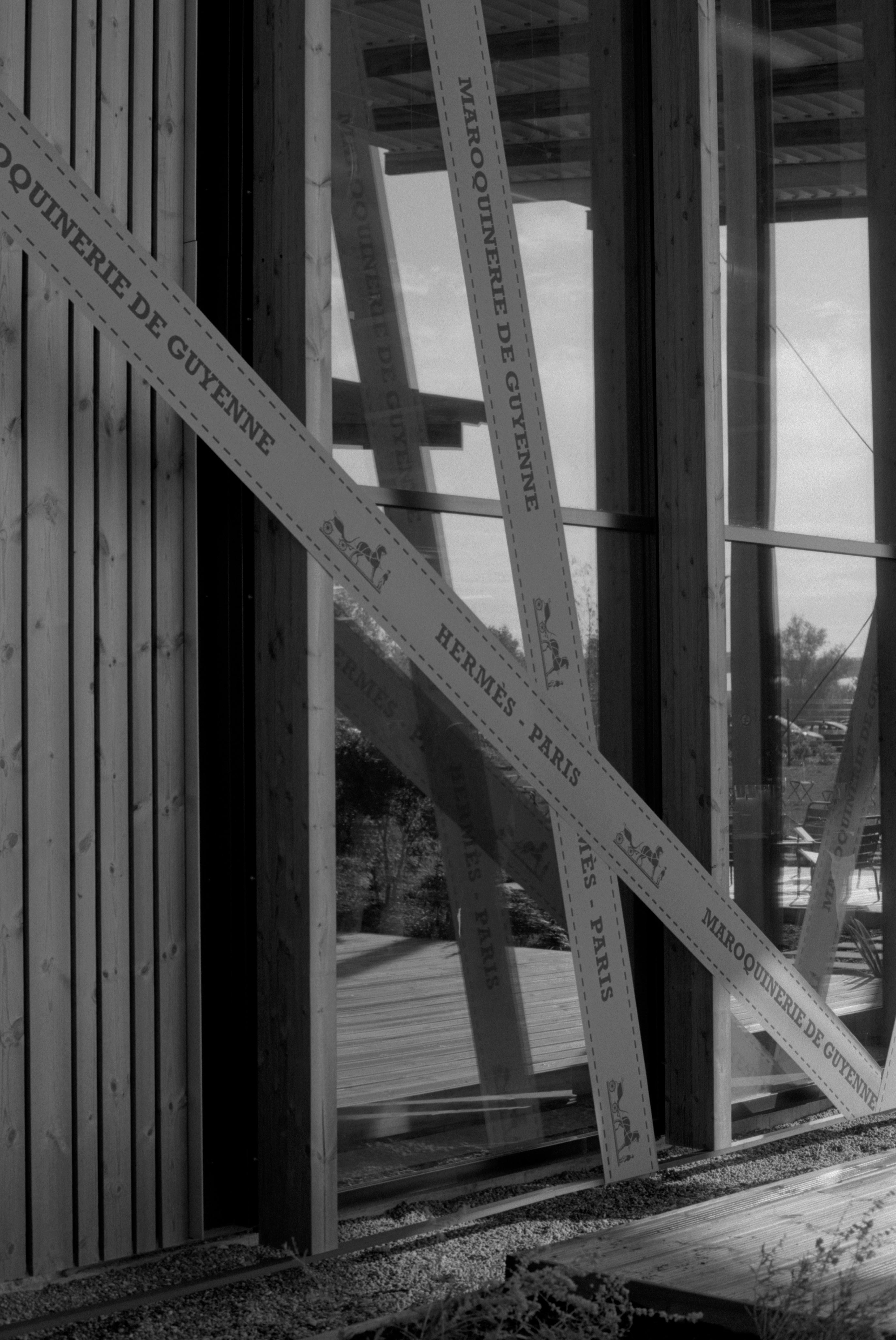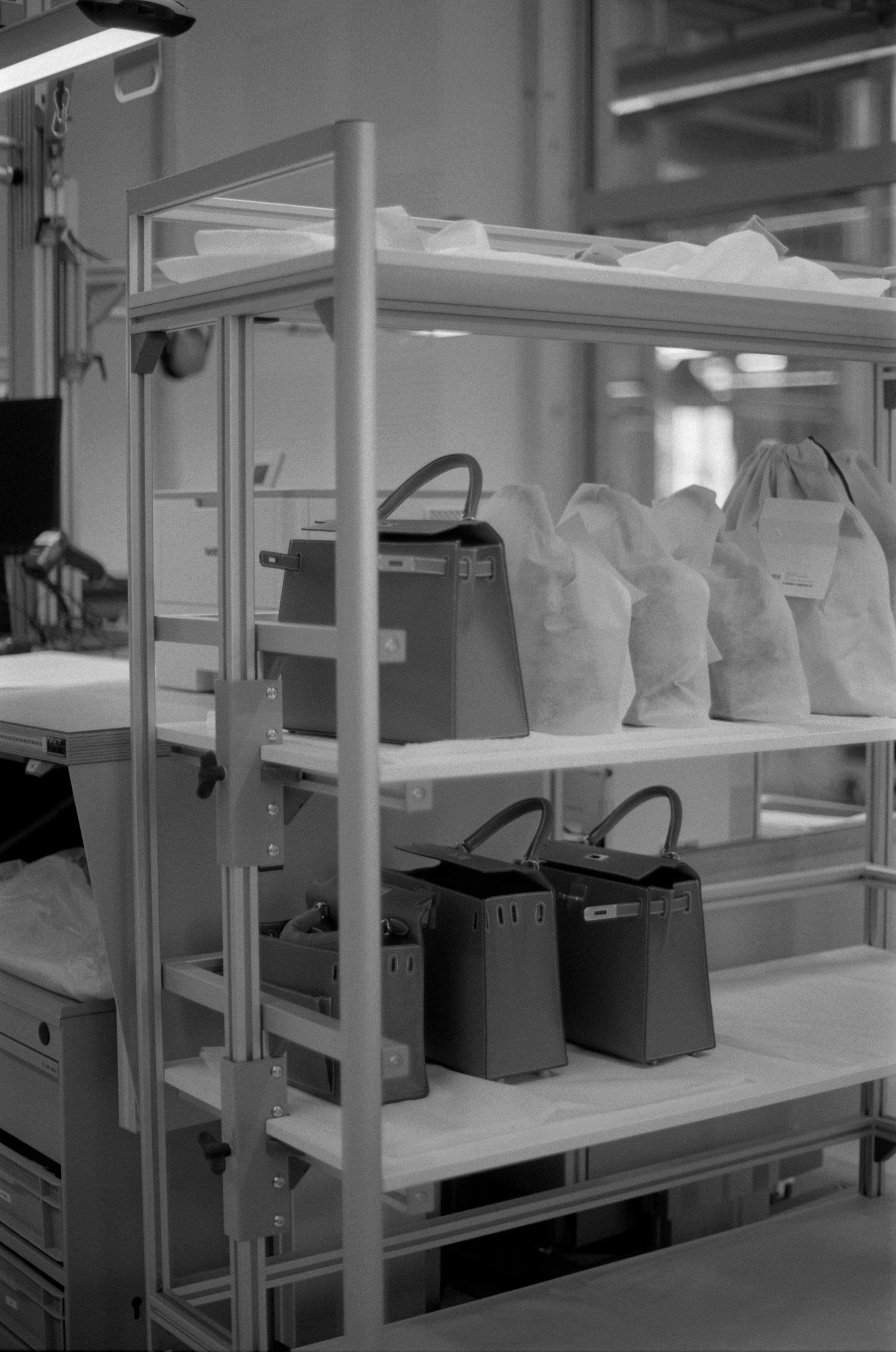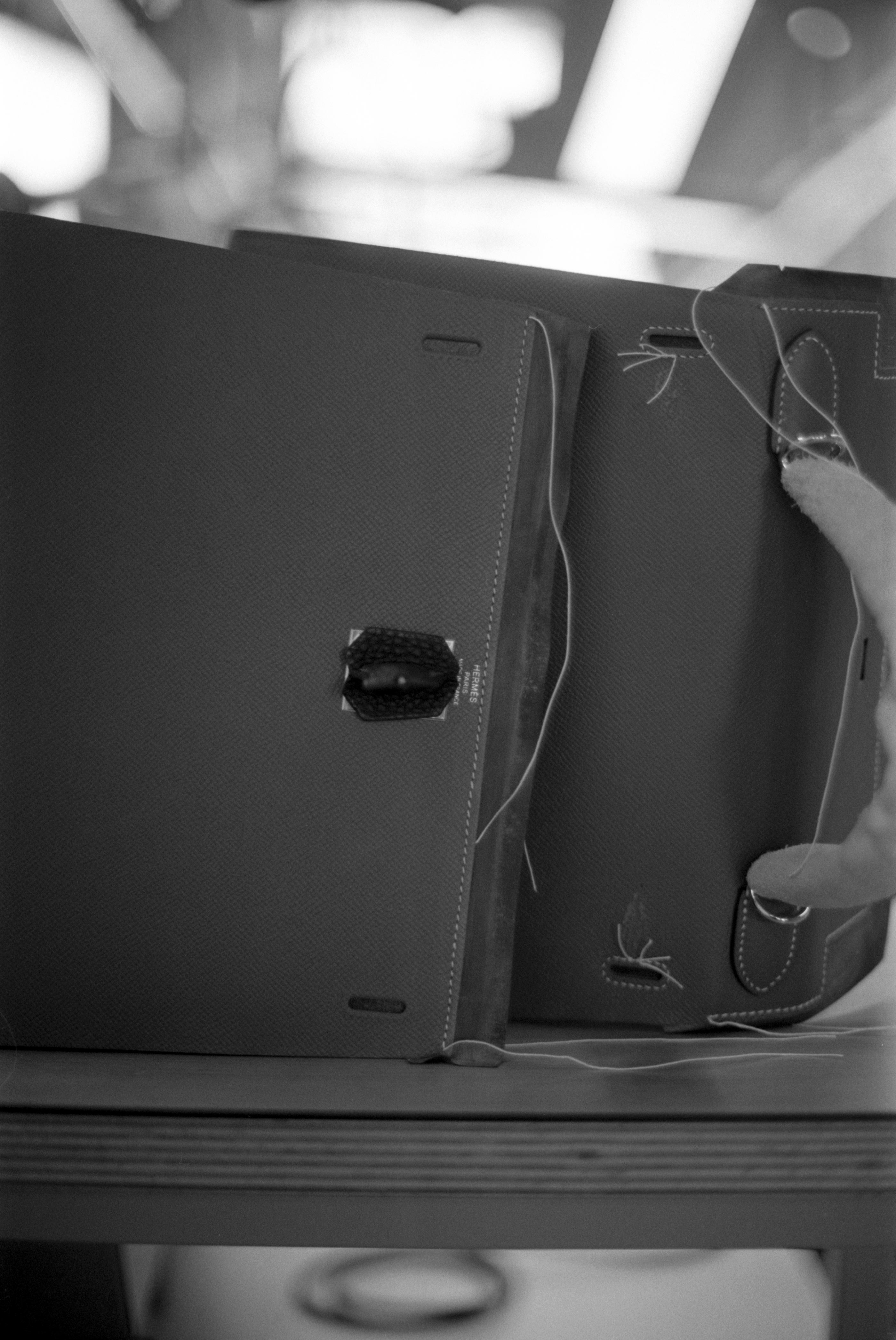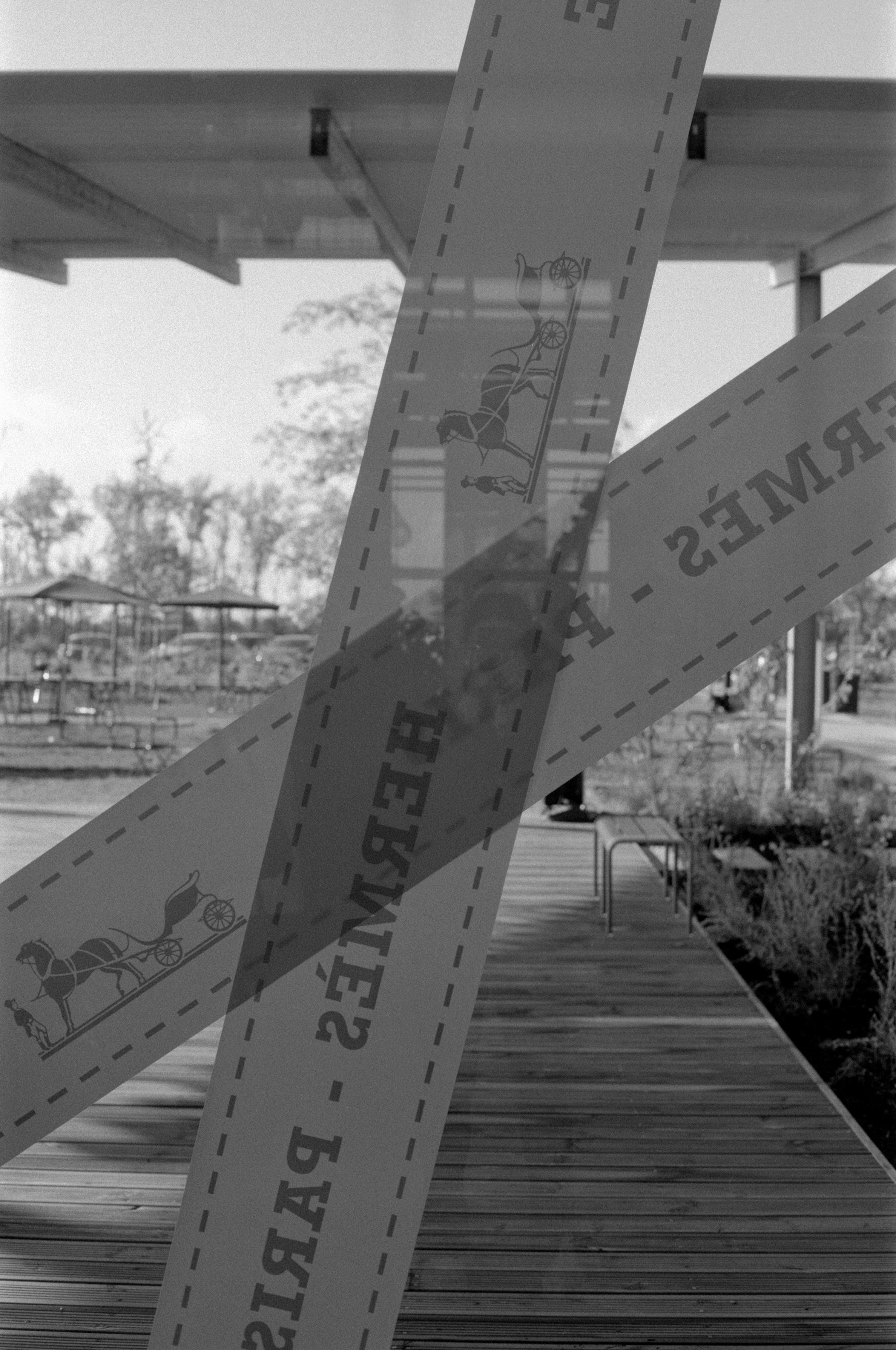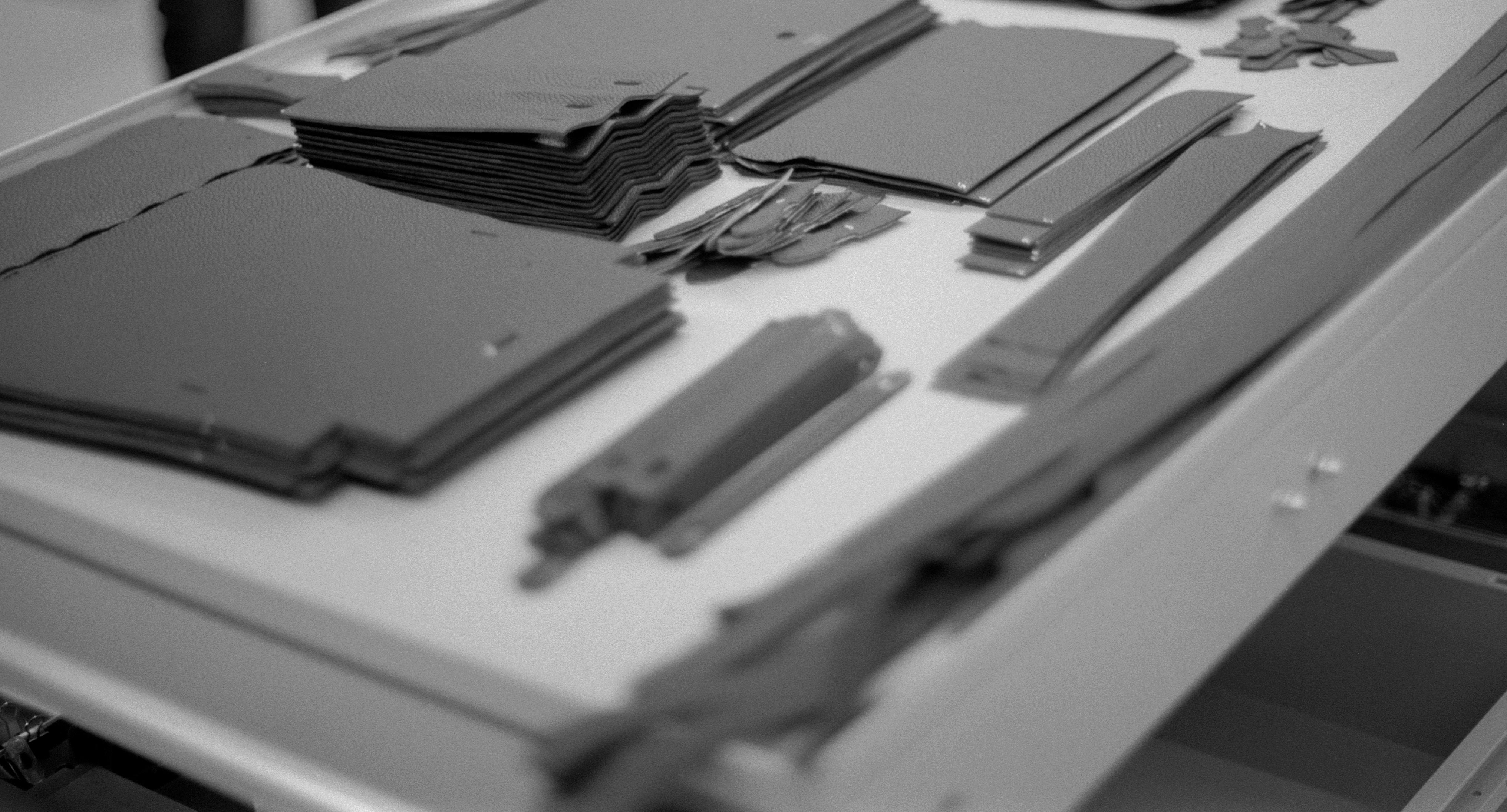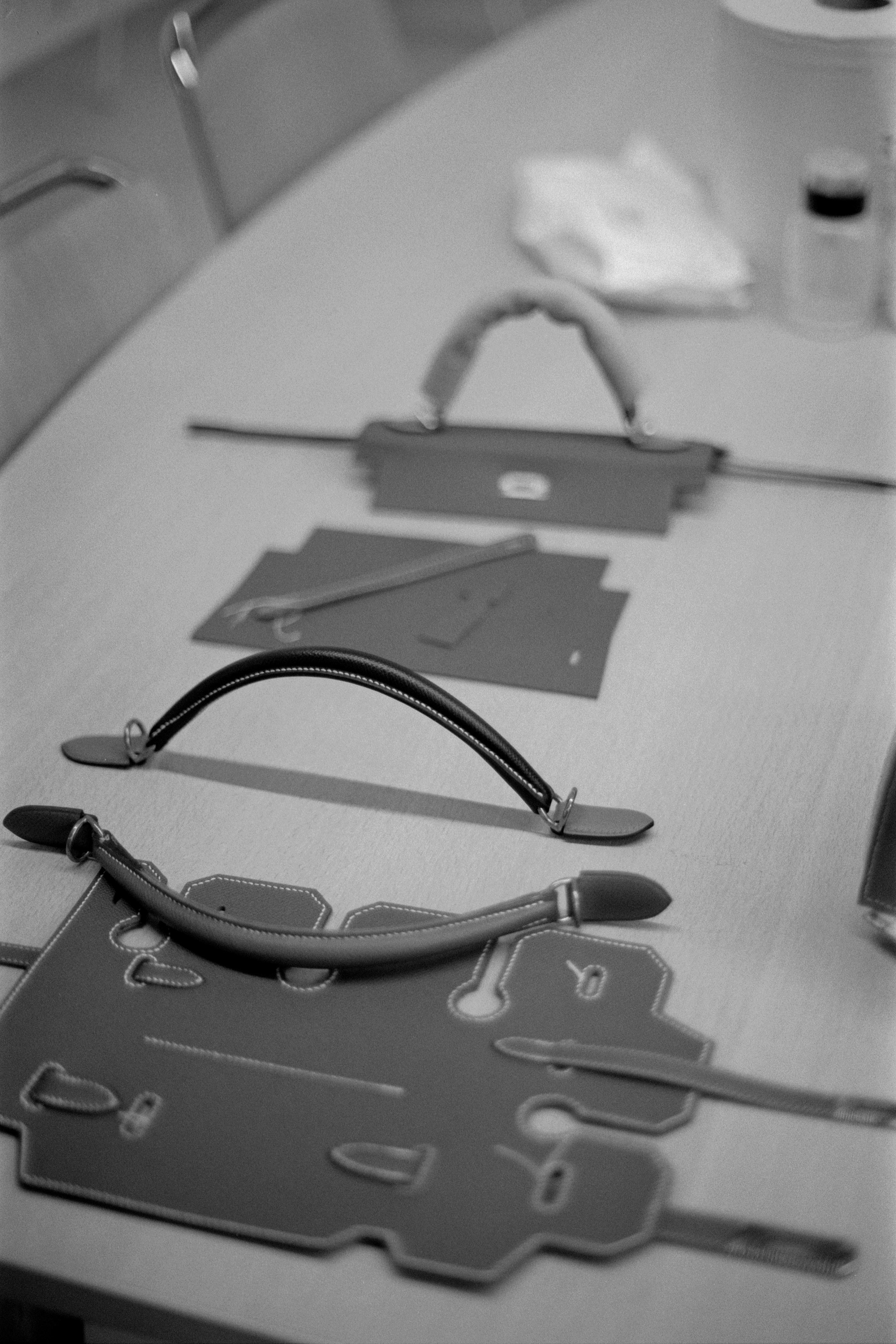MARO—
QUINERIE
DE
GUYENNE
There is hardly a more iconic bag than the Kelly Bag. With only one handle and the typical closure with a small lock including a leather bell that protects the key, the valuable leather bag by HERMÈS represents a quintessential design. A timeless object whose history began back in the 1930s. It was worn by namesake Grace Kelly in the 1950s concealing the early signs of her pregnancy.
A Hermès handbag is crafted by hand. From start to finish, it is made by only one artisan. As part of the official opening of the new leather factory of Hermès near Bordeaux, I looked over the shoulders of the craftsmen to see how these iconic objects are made and got a detailed insight into the new manufactory.
Since the founding of the house in 1837, Hermès has always been committed to preserving the artisanal dimension of its manufacturing, which is a source of consistency, creativity, flexibility and innovation. The Maroquinerie de Guyenne, Hermès’ first production site in the French department of Gironde, preserves the house’s artisanal and human culture, as well as the spirit of passing on Hermès’ exceptional know-how. To encourage training, mentoring and support, nearly one-third of the staff comes from other group sites or from other professions within the house.
Since the founding of the house in 1837, Hermès has always been committed to preserving the artisanal dimension of its manufacturing, which is a source of consistency, creativity, flexibility and innovation. The Maroquinerie de Guyenne, Hermès’ first production site in the French department of Gironde, preserves the house’s artisanal and human culture, as well as the spirit of passing on Hermès’ exceptional know-how.
With this new leather manufacturing site, Hermès is strengthening its role as a socially responsible company, creating excellent jobs and reaffirming its intention to make a sustainable contribution to the development of the region. A leather specialist needs – depending on the material and finish – about 15-20 hours of handwork to make a Kelly bag—perfect craftsmanship that requires perfect conditions.
The activity of the Maroquinerie de Guyenne is based on the cut-table-stitch model, which consists in gathering in a single place a team of craftsmen who have all the necessary skills to produce a leather item. This means that each workshop manager organizes his activity around these three métiers. The cut-table-stitch model brings together tailors, carpenters and seamstresses in the same workshop to encourage and facilitate daily exchanges around objects in the spirit of a family workshop. Above all, this model promotes the versatility of the artisans’ skills in cutting, table work and sewing. To ensure safety, ease of use and quality assurance, each craftsman is trained in the operation and adjustment of all machines, tools and associated consumables.
The first step in the production of a Hermès leather bag, like the iconic Kelly bag, is the preparation of the leather, which is first examined for any defects. Defects, like mosquito bites are only visible when the leather has been tanned. Then the skin is cut into suitable pieces, depending on the size of the bag, different sized pieces of leather are required—as the starting material for the timeless icons. A wooden clamp is used to hold the leather together, while the craftsman uses the saddle stitch to execute each stitch with precision. Made with two needles, one affixed at each end of a single thread, its application ensures a highly robust construction and creates an elegant and accurate seam. The clou of it is the thread coated with beeswax to ensure solidity and permanence. Originally it comes from the Hermès EQUESTRIANISM.
In the production of the handle different layers of the same type of leather are used. In general, a handle consists of 4 to 5 layers of leather. With the help of his thigh, the craftsman forms the shape of the handle. The attachment of the fittings is also very unique: Unlike many other bags, Hermès does not attach the hardware with screws, but with the ‘pearling’ process. With this type of fastening, the metal fittings remain in place forever, as no screws can loosen.
The Maroquinerie will continue its recruitment activities to reach the goal of 260 craftsmen in the final phase. In addition, the Maroquinerie de Guyenne has the ‘Haute Qualité Environnementale’ (HQE) certification. The 140-meter-long wood and concrete building was designed by Bayonne-based architect Patrick Arotcharen, whose work is strongly influenced by the relationship between nature, climate and architecture. It meets the criteria of sustainable development of the maison and is an expression of his commitment to ‘beautiful things in beautiful places’.
The eight studios that house the craftsmen are all flooded with natural northern light, which best favors the precise execution of the craft work. From the beginning, this project focused on environmental criteria, such as promoting well-being through natural lighting, soft lighting in the workshop, an efficient heating and cooling system, high-quality supply air and excellent acoustics, among others. The biophilic design, which integrates pleasant natural spaces, is also a source of well-being.
The activity of the Maroquinerie de Guyenne is based on the cut-table-stitch model, which consists in gathering in a single place a team of craftsmen who have all the necessary skills to produce a leather item. This means that each workshop manager organizes his activity around these three métiers.
in partnership with HERMÈS
shot on location in GUYENNE
